Architectural Ceramic Assemblies Workshop
Feature on ACAW: Workshop organizers, participants and students reflect on ACAW's impact on research-to-practice translation.
The Architectural Ceramic Assemblies Workshop (ACAW) is a hands-on research and development workshop for architects and facade engineers to explore the use of terra cotta in high-performance facade design.
Since 2016, representatives of industry and academia from around the world have gathered annually in Buffalo for the Architectural Ceramic Assemblies Workshop, presented by Boston Valley Terra Cotta and the University at Buffalo School of Architecture and Planning and supported by the UB Sustainable Manufacturing and Advanced Robotic Technologies (SMART).
The workshop’s objective is to introduce and consider the properties of terra cotta earlier in the architect’s design process and to develop research and design models between manufacturing and architectural industries useful to the efficient production of high-performance facade solutions.
Each year, ACAW culminates in Buffalo and UB's fabrication facilities for a weeklong event where teams construct prototypes and present their studies to peers in the industry.
ACAW is sponsored by Boston Valley Terra Cotta, UB's School of Architecture and Planning and the UB Sustainable Manufacturing and Advanced Robotic Technologies (SMART) Community of Excellence.
In the press
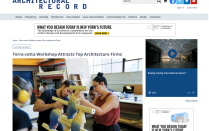
Architectural Record (Sept. 2019) / "Terra Cotta Workshop Attracts Top Firms" / Read full article
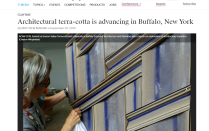
Architect's Newspaper (Sept. 2019) / "Architectural terra-cotta is advancing in Buffalo, N.Y." / Read full article
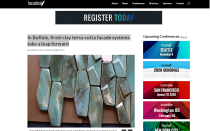
Facades+ (Sept. 2018) / "In Buffalo, fired-clay terra-cotta facade systems take a leap forward"/ Read full article
Explore the workshops
ACAW 2020
ACAW 2020 convened hundreds of architects, ceramic artists and facade engineers via a virtual two-day workshop (Aug. 12-13, 2020) to view cutting-edge examples of ceramic components for high-performance buildings. Combining the models of academic research, artistic experimentation and industry expertise, leading architects from Handel Architects, Perkins and Will, PLP Architects, KPF, LMN, Studio Gang, Pelli Clark Pelli/Studios, Smith and Gill, and SOM virtually presented their prototype assemblies. Team members worked with engineers and craftspeople from Boston Valley Terra Cotta with assistance from the faculty and students from the School of Architecture and Planning. Among the featured presentations was research developed by UB on scripted variable slip-casting molds.
- View a virtual showroom of participant work
- Watch presentation videos
ACAW 2019
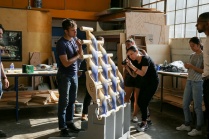
ACAW organizers, participants and students reflect on the translation of research into practice.

Team UB's ACAW 2019 project, “Terra-Cotta Grotto,” explores the spatial, material, structural and ecological conditions of a grotto using non-standard fabrication methods with the standard terra cotta rain screen panel.
ACAW 2018
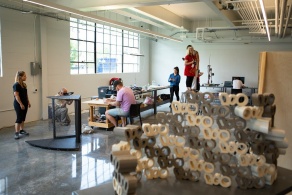
A "marathon internship" for students, ACAW provides a valuable learning experience for students.
ACAW 2017
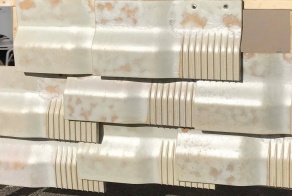
A terra cotta shingle system developed by Team UB/Alfred through ACAW 2017 features the bioclimatic elements of luminescence, shading and thermal absorption. Photo courtesy of Laura Garófalo
Architects have turned to terra cotta for millennia, drawn by its durability, its natural capacity to transfer heat and moisture, and its sculptural qualities. In ACAW 2017, teams of architects and ceramaicsts from around the world combined these age-old properties into environmentally responsive facade solutions that address today's climate crisis.
ACAW 2016

Learn more about the origins and aspirations of ACAW and hear from participants of the inaugural workshop.